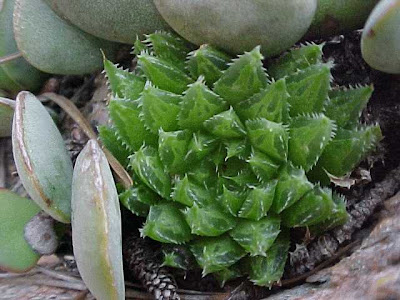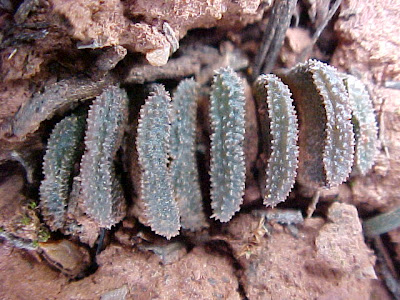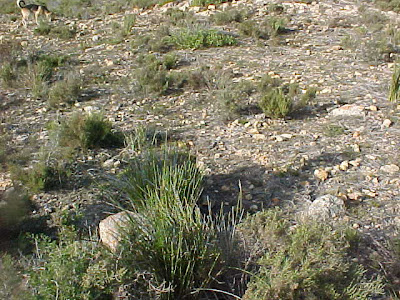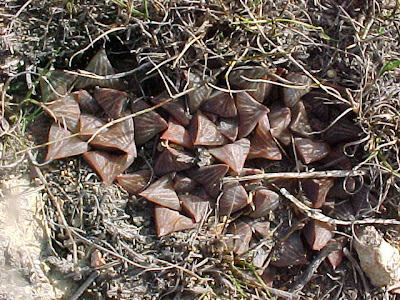
Haworthia kingiana can grow up to about 18 cm tall with thick and wide attenuate leaves. The photographs are from the type locality. Haworthia kingiana is localized in a rather small area that has diminished considerably in size due to urban development. Fortunately a very similar looking form has been discovered in the Glentana area.

 Haworthia kingiana in habitat.
Haworthia kingiana in habitat.This Haworthia is easy to grow from seed in our climate in the Little Karoo, but apparently more difficult elsewhere.
































































